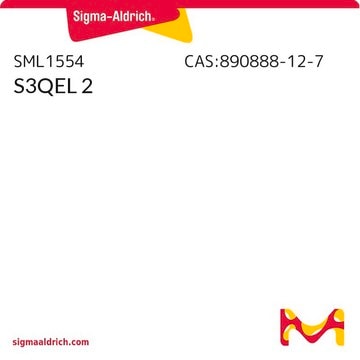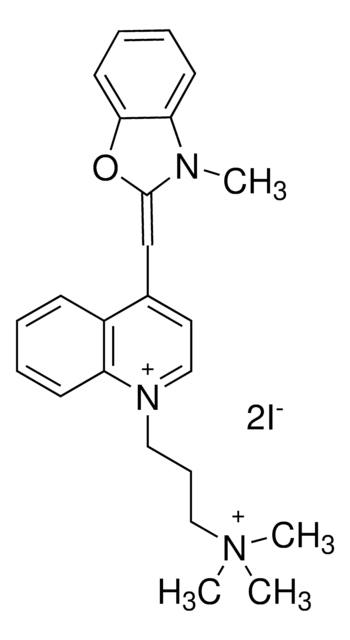SML1948
S1QEL1.1
≥98% (HPLC)
Synonym(e):
N1-(3-acetamidophenyl)-N2-(2-(4-methyl-2-(p-tolyl)thiazol-5-yl)ethyl)oxalamide, S1QEL
About This Item
Empfohlene Produkte
Qualitätsniveau
Assay
≥98% (HPLC)
Form
powder
Farbe
white to beige
Löslichkeit
DMSO: 2 mg/mL, clear
Versandbedingung
wet ice
Lagertemp.
−20°C
SMILES String
CC1=C(CCNC(C(NC2=CC=CC(NC(C)=O)=C2)=O)=O)SC(C3=CC=C(C)C=C3)=N1
Anwendung
- to investigate the role of mitochondrial-derived superoxide in triggering ferroptosis
- to study the mechanism involved in the regulation of anti-fungal responses of macrophages against Aspergillus infection
- in combination with mito-antioxidant to study their influence on mitochondria-derived H2O2 in cancer cells
- to determine the effect of oxidative stress depletion on myoblast differentiation
Biochem./physiol. Wirkung
Lagerklassenschlüssel
11 - Combustible Solids
WGK
WGK 3
Flammpunkt (°F)
Not applicable
Flammpunkt (°C)
Not applicable
Analysenzertifikate (COA)
Suchen Sie nach Analysenzertifikate (COA), indem Sie die Lot-/Chargennummer des Produkts eingeben. Lot- und Chargennummern sind auf dem Produktetikett hinter den Wörtern ‘Lot’ oder ‘Batch’ (Lot oder Charge) zu finden.
Besitzen Sie dieses Produkt bereits?
In der Dokumentenbibliothek finden Sie die Dokumentation zu den Produkten, die Sie kürzlich erworben haben.
Unser Team von Wissenschaftlern verfügt über Erfahrung in allen Forschungsbereichen einschließlich Life Science, Materialwissenschaften, chemischer Synthese, Chromatographie, Analytik und vielen mehr..
Setzen Sie sich mit dem technischen Dienst in Verbindung.








